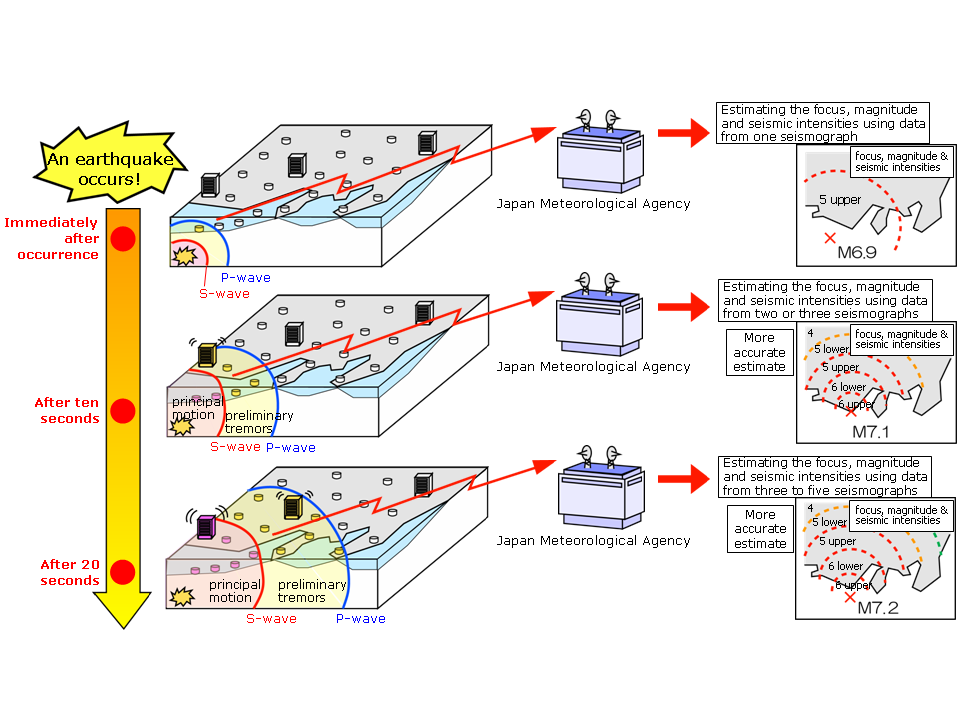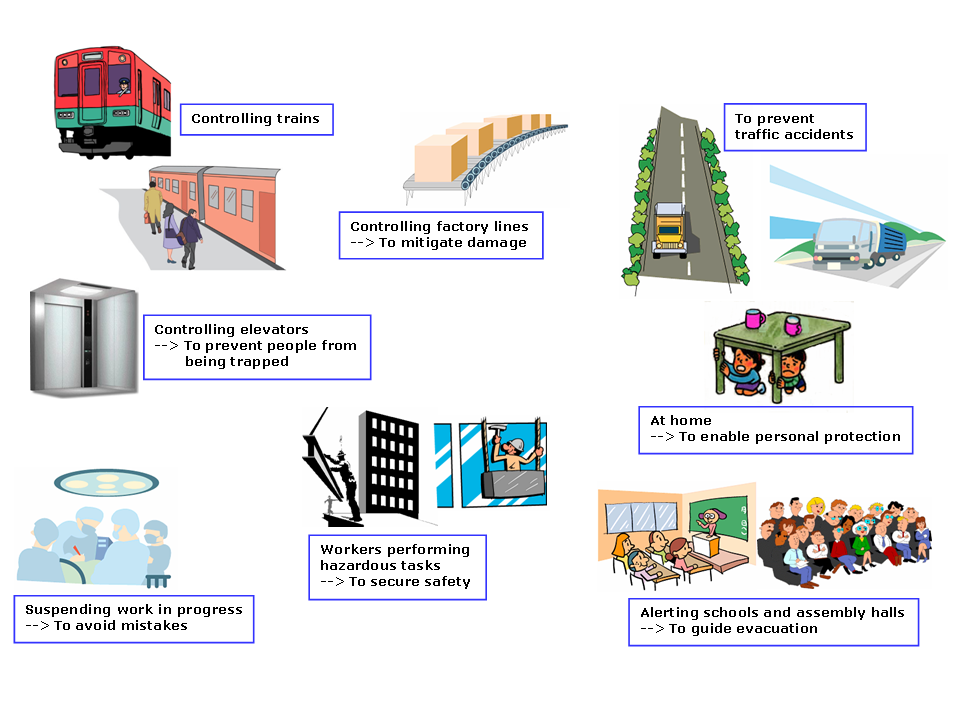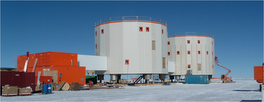Japan - Pioneering Earthquake Early Warning
The Japanese Meteorological Agency has been testing an Earthquake Early Warning system for some time. Up until recently, the warnings were received only by certain agencies and infrastructures such train networks. As of October 1st, the JMA has started distributing these alerts to the public at large, via radio and TV.
The system provides estimates of the seismic intensities and expected arrival time of strongest motion. These estimations are based on fast determination of the location and magnitude of the earthquakes using data observed by seismometers near the epicenter.
Earthquake Early Warning reduces earthquake-related damage by giving time to act in preparation to the shaking, for example by slowing down trains, controlling elevators. Now that warnings are received by the public, they will enable people to protect themselves in the appropriate manner for the location they are in. The decision to trigger an earthquake warning is taken automatically by the EEW system, based on the information it receives from the seismic stations. There is a trade-off inherent in all alert or warning procedures, between the promptness of an alert and its accuracy: simply put, it takes time to get enough information to make an informed decision, but an alert is only useful if given sufficiently in advance.
The decision to trigger an earthquake warning is taken automatically by the EEW system, based on the information it receives from the seismic stations. There is a trade-off inherent in all alert or warning procedures, between the promptness of an alert and its accuracy: simply put, it takes time to get enough information to make an informed decision, but an alert is only useful if given sufficiently in advance.
The JMA list the following inevitable limitations to the EEW system, which have to be taken into account by the users:
TimingYou can read more about the EEW system on the JMA webpage, where you can also find these two leaflets explaining how the system works, and how to react to a warning.
The window of time from the announcement of an Earthquake Early Warning until the arrival of the main tremors is very short, i.e. a matter of seconds (or between several seconds and a few tens of seconds). In areas that are close to the focus of the earthquake, the warning may not be transmitted before strong tremors hit.
False alarms
When using data from only one seismograph, false Earthquake Early Warnings may occur as a result of noise from accidents, lightning or device failure.
Magnitude estimation
There are limits to the accuracy of estimating magnitude, especially for large earthquakes. It is difficult to separate earthquakes and provide accurate warnings when multiple earthquakes occur almost simultaneously or in close proximity to each other.
Seismic intensity estimation
There are limits to the accuracy of estimating seismic intensity by statistical attenuation formula, as well as limits to the prediction of land surface amplification.
Call for comments: Are you living in Japan, or do you know people who are? Have you (or they) had to react to an Earthquake Early Warning yet? If so, please let me know how it worked, what went through your mind, what you did to prepare for the shaking, how you felt afterwards.
-----
Keep up to date with the latest developments at http://sismordia.blogspot.com




1 comment:
This is truly a great read for me. I have bookmarked it and I am looking forward to reading new articles. Keep up the good work!. UNR Receives Grant To Help Improve Early Earthquake Warning System
Post a Comment